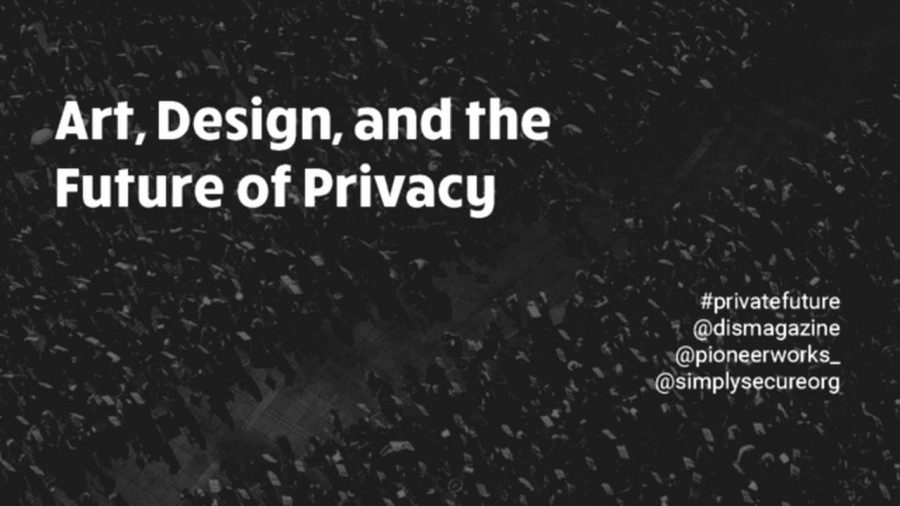Marvin Jordan: Welcome to Art, Design, and the Future of Privacy. This is a beautiful crowd. It’s an experiment in the making so it’s very wonderful to see so many people here for the first one. We’re kind of planting seeds for the future. You’ll see more of us eventually.
I’d like to introduce Meredith Whittaker. [cheering from crowd] Round of applause. She’s a visionary. No big deal.
Meredith Whittaker: Back at ya.
Jordan: She’s the open source research lead at Google. The board chair of Simply Secure (which we’ll be talking about more) and a ceaseless advocate for technology that serves people and not the other way around.
Whittaker: Thank you so much for the kind introduction. I would like to introduce Marvin Jordan. He is an editor at DIS Magazine, and the person behind their recent data issue, which I imagine many of you are familiar with. He’s also someone who works extensively theorizing data, politics, and power. It is a pleasure to be here with you.
So welcome. Thank you for being here. What are we doing? Marvin, me, a number of people in the audience, on the stage, are here because we want to broaden this discussion. We want to broaden the culture around this topic. We want to reach critical thinkers, creative people, and all of those out there who care about the stakes and the impact of network technologies but may not have an elite computer science degree or have spent their childhood taking gadgets apart, right?
Ursula Franklin, the great theorist of sociotechnical systems said, “Technology is both dreams and knowledge.” I would restate that technology is dreams first, and then knowledge. We have to know what we want. We have to imagine how it looks. We have to understand how it feels, how it smells, how it functions, before we can design it. Before we can code it. Before we can implement it, and before we can sell it.
So let’s dream.
What does a tech culture, and a practice born out of concerns with social justice and a sensitivity to context and local needs look like? How can the observations, research, practice, engagements of theorists, artists, designers, conscious technologists, define and lead the development of such a culture? Can we create a space in which the vision and requirements of those impacted by technology set the requirements for development and implementation?
Maybe we can? So we’re going to try.
Thank you for being here.
Jordan: One more round of applause for Meredith.
With that in mind, I’d like to introduce Scout Sinclair Brody, the executive directory of Simply Secure, and much more, talking about human rights as a design challenge.
